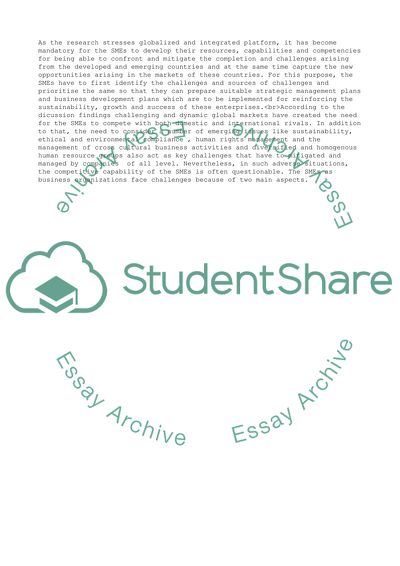Cite this document
(“Global Challenges Impacting SMEs Essay Example | Topics and Well Written Essays - 2500 words”, n.d.)
Global Challenges Impacting SMEs Essay Example | Topics and Well Written Essays - 2500 words. Retrieved from https://studentshare.org/business/1701711-global-challenges-impacting-smes
Global Challenges Impacting SMEs Essay Example | Topics and Well Written Essays - 2500 words. Retrieved from https://studentshare.org/business/1701711-global-challenges-impacting-smes
(Global Challenges Impacting SMEs Essay Example | Topics and Well Written Essays - 2500 Words)
Global Challenges Impacting SMEs Essay Example | Topics and Well Written Essays - 2500 Words. https://studentshare.org/business/1701711-global-challenges-impacting-smes.
Global Challenges Impacting SMEs Essay Example | Topics and Well Written Essays - 2500 Words. https://studentshare.org/business/1701711-global-challenges-impacting-smes.
“Global Challenges Impacting SMEs Essay Example | Topics and Well Written Essays - 2500 Words”, n.d. https://studentshare.org/business/1701711-global-challenges-impacting-smes.


